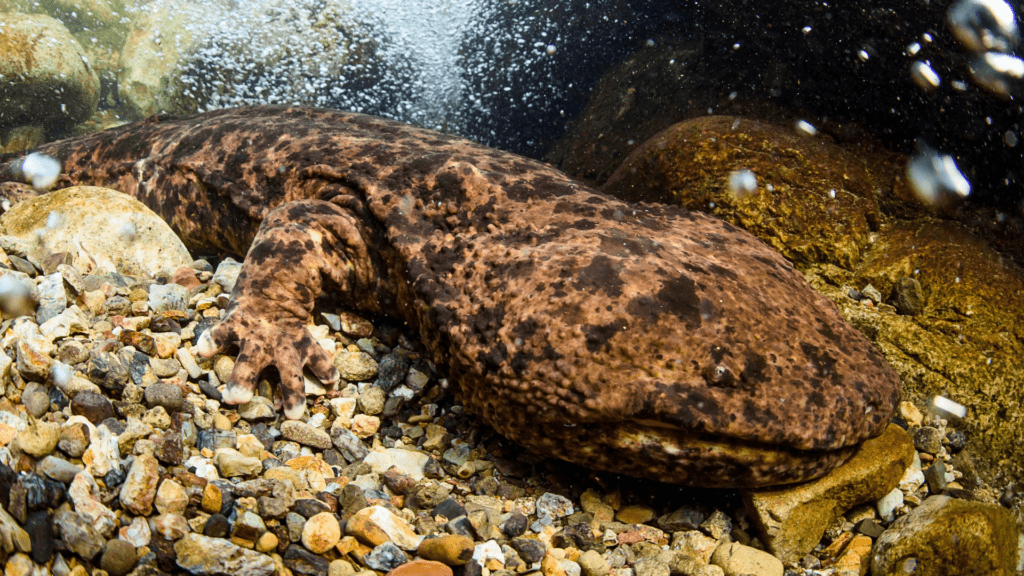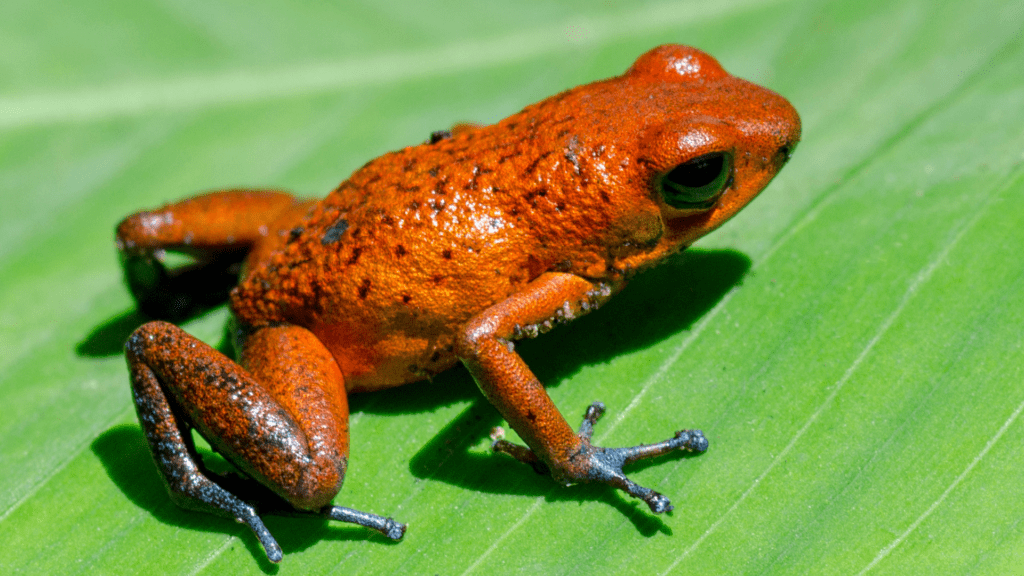The Palmate Newt (Lissotriton helveticus) is a small species of newt that is primarily found in Western Europe. This species is well-known for its small size and unique physical characteristics. As one of the smallest newts in the world, it plays an important ecological role in its habitat. Despite being listed as a species of “Least Concern” by the International Union for Conservation of Nature (IUCN), the Palmate Newt faces threats in certain parts of its range due to habitat loss and environmental changes. In this detailed article, we will delve into the physical characteristics, behavior, habitat, diet, reproduction, and conservation status of the Palmate Newt.
Scientific Classification
Taxonomy and Scientific Name
The Palmate Newt belongs to the family Salamandridae and is scientifically classified as Lissotriton helveticus. It is one of the smallest species within the Caudata order, which includes all salamanders and newts. The classification of this species is as follows:
- Kingdom: Animalia (Animals)
- Phylum: Chordata (Chordates)
- Class: Amphibia (Amphibians)
- Order: Caudata (Tailed Amphibians)
- Family: Salamandridae (Salamander Family)
- Genus: Lissotriton
- Species: Lissotriton helveticus
Subspecies of the Palmate Newt
The Palmate Newt is further divided into three recognized subspecies, each found in specific regions:
- Lissotriton helveticus helveticus – The most common subspecies, found predominantly in Western Europe, including the United Kingdom, France, and Germany.
- Lissotriton helveticus punctillatus – This subspecies is located in more restricted areas, particularly in the southern parts of the range.
- Lissotriton helveticus alonsoi – A subspecies found in the western regions of Europe, with a unique set of physical characteristics.
Physical Description of the Palmate Newt
Size and Growth
The Palmate Newt is one of the smallest species of newt in the world. Adults typically grow between 8 cm and 10 cm in length. Male newts are generally slightly smaller than females. When the larvae hatch, they measure only 8 to 10 mm in length, making them almost microscopic at birth. These newts are not only small in size but also highly agile and capable of thriving in their specific aquatic and terrestrial habitats.
Coloration and Markings
Palmate Newts exhibit a variety of colors, typically in shades of brown and olive green. These colors help the newts blend into their environment, especially in the muddy waters and vegetation of their habitat. The backs of both males and females are sometimes covered with dark spots or blotches, providing camouflage from predators. The underside of the Palmate Newt is usually pale, with a yellow or orange hue. This coloration can vary slightly depending on the individual and their specific habitat.
Female Palmate Newts can be distinguished from males by their pale yellow or pink throats, which lack any markings. This feature is especially useful when identifying the sex of the newts in the wild.
Physical Features and Male Characteristics
One of the key characteristics of the male Palmate Newt is the development of webbed feet during the breeding season. These webbed feet help males move efficiently through their aquatic environment. Additionally, males develop a distinct crest along their backs, which is more pronounced during the mating season. The crest is low and smooth, but it becomes higher near the tail and ends in a thread-like tip. These adaptations help the males to attract females and perform courtship rituals.
In addition to their webbed feet and crest, male Palmate Newts also develop enlarged cloacal regions before the mating season, which plays a role in reproduction and mate selection.
Habitat and Distribution of the Palmate Newt
Range and Geographic Distribution
Palmate Newts are native to Western Europe, with a range that includes the United Kingdom, Belgium, France, Luxembourg, and parts of Germany and Switzerland. In the United Kingdom, they are found mainly in the southern and central regions, including parts of England, Wales, and Scotland. Palmate Newts prefer habitats that offer a mix of water and land, such as ponds, lakes, marshes, and even forested areas. They are most commonly found in moist environments, but they can tolerate drier conditions during certain periods of their life cycle.
Preferred Habitat Types
The natural habitat of the Palmate Newt includes various types of freshwater environments, such as:
- Ponds and lakes
- Streams and marshes
- Wetlands and canals
- Forests and agricultural land
While these newts thrive in water, they can also be found away from their aquatic habitats during their terrestrial phase. In fact, Palmate Newts can often be spotted on land, particularly in the moist, cooler months of the year, when they leave the water to hibernate or search for food.
Diet and Feeding Behavior
Diet and Feeding Habits
Palmate Newts are carnivorous, feeding primarily on invertebrates such as small insects, worms, and other aquatic organisms. Their diet also includes planktonic animals, small crustaceans, and occasionally, frog tadpoles. These newts are known for their cannibalistic behavior, sometimes preying on other smaller newts and salamanders in their environment.
They use their sticky tongues to capture their prey, which is a common feature among amphibians. The tongue is extremely flexible, allowing the newt to catch insects, small fish, and other small aquatic creatures. Insects and other small animals make up the majority of their diet, but they are opportunistic feeders and will take advantage of any food available.
Feeding and Hunting Strategies
During their active periods, Palmate Newts hunt for food primarily at night, which is typical for many species of newts and salamanders. They tend to be more active in cooler and more humid conditions, which help them conserve moisture. In contrast, during the warmer, drier months, these newts may retreat to more sheltered areas to avoid dehydration and conserve energy.
Reproduction and Life Cycle
Breeding Season and Reproductive Behavior
The breeding season for the Palmate Newt begins in April and extends through May. During this time, both males and females migrate to suitable breeding sites, usually ponds or lakes, where they engage in mating behaviors. Males often display their colorful markings and develop their distinctive crest to attract females.
Female Palmate Newts lay between 100 to 300 eggs, which they attach individually to plants and vegetation in the water. These eggs hatch after about 2 to 3 weeks, and the larvae emerge with external gills. Over the course of several weeks, the larvae begin their metamorphosis, slowly transforming into juvenile newts.
Life Cycle and Development
After hatching, the larvae continue to develop in the water, growing larger and shedding their gills as they begin their transition to land. This process, known as metamorphosis, typically takes 6 to 9 weeks, though in colder regions, it may take a year for the larvae to fully mature. As the larvae undergo metamorphosis, they lose their gills and leave the water, transitioning to a terrestrial lifestyle.
Hibernation
Palmate Newts hibernate during the winter months, typically from November to March. Hibernation usually occurs in sheltered, dry areas under logs, rocks, or in burrows, where they remain inactive until the warmer spring months return. Occasionally, these newts may hibernate in water if the conditions are suitable.
Conservation Status
Threats and Conservation Efforts
While the Palmate Newt is currently listed as a species of “Least Concern” by the IUCN, it is still considered threatened in some regions due to various factors, including:
- Habitat destruction caused by urbanization and agriculture
- Pollution of water sources
- Climate change affecting their breeding cycles and habitat availability
Conservation efforts are necessary to protect the habitats of the Palmate Newt and ensure its survival in the wild. Protection of wetland habitats, creation of conservation areas, and careful monitoring of populations can help preserve the species for future generations.
Conclusion
The Palmate Newt is a fascinating species that plays an important role in the ecosystems of Western Europe. Although it faces challenges from environmental changes, it remains an adaptable and resilient species. Through proper conservation efforts and habitat protection, we can help ensure that the Palmate Newt continues to thrive in the wild. By understanding their physical characteristics, behaviors, and environmental needs, we can better appreciate the complexity of this remarkable amphibian and contribute to its preservation.
[toggle title=”Resources” state=”close”]https://www.arc-trust.org/palmate-newt https://www.wildlifetrusts.org/wildlife-explorer/amphibians/palmate-newt https://surrey-arg.org.uk/SARGWEB.php?app=SpeciesData&Species=palmate_newt https://www.arc-trust.org/palmate-newt[/toggle]

